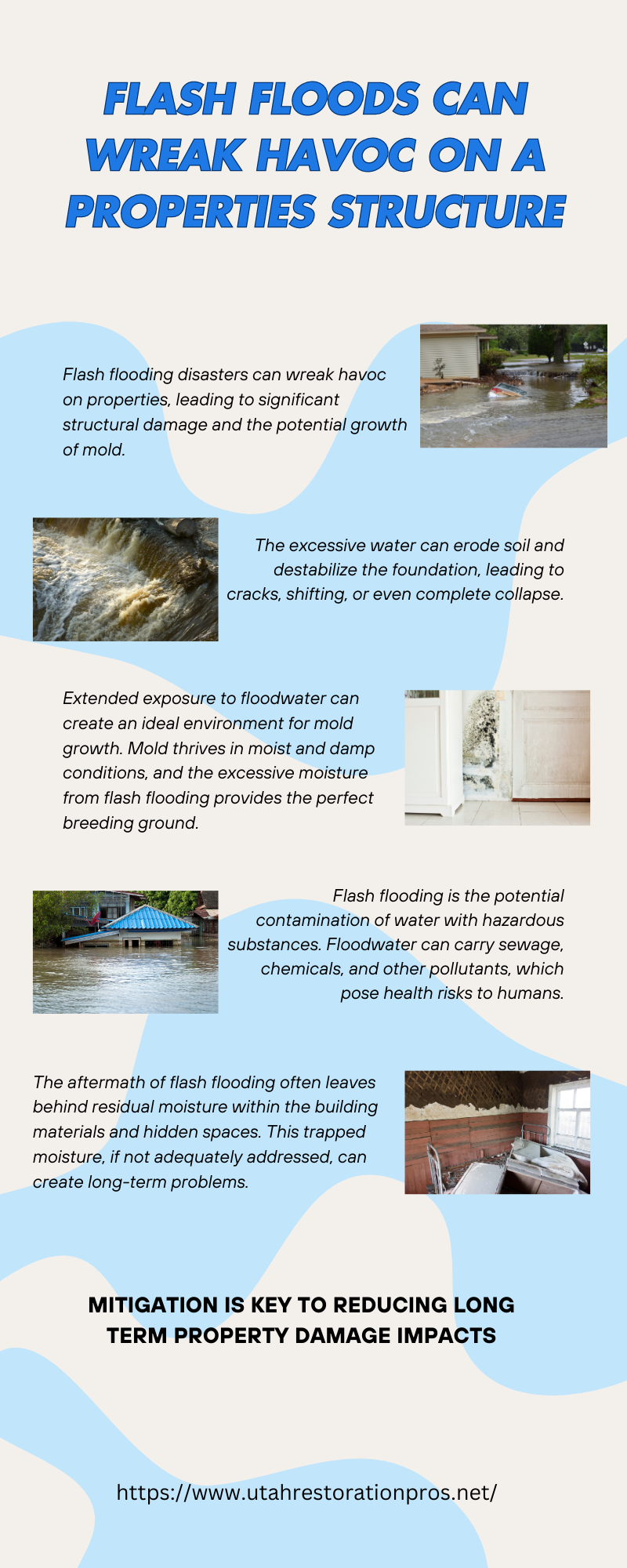Flash flooding disasters can wreak havoc on properties, leading to significant structural damage and the potential growth of mold. When a flash flood occurs, the sudden and excessive amount of water overwhelms the natural drainage systems, causing water to rapidly accumulate. This can infiltrate buildings and create various destructive effects. With weather patterns worsening across the United States recently, it’s important to understand the challenges of severe weather and have a plan to restore a property as quickly as possible.
To start, flash flooding can weaken the structural integrity of a property. The force and volume of water can exert immense pressure on foundations, walls, and other structural components. The excessive water can erode soil and destabilize the foundation, leading to cracks, shifting, or even complete collapse. Additionally, the force of the water can damage walls, weaken supporting beams, and compromise the stability of the entire structure.
One of the challenges is that extended exposure to floodwater can create an ideal environment for mold growth. Mold thrives in moist and damp conditions, and the excessive moisture from flash flooding provides the perfect breeding ground. As water seeps into building materials, such as walls, floors, and ceilings, it can remain trapped and create a moist environment conducive to mold proliferation. If not properly addressed, mold can spread rapidly and pose health risks to occupants, as it releases spores and allergens into the air.
Another concern with flash flooding is the potential contamination of water with hazardous substances. Floodwater can carry sewage, chemicals, and other pollutants, which pose health risks to humans. When this contaminated water infiltrates a property, it not only damages surfaces and belongings but also introduces harmful substances that require thorough and specialized cleaning and disinfection to ensure a safe environment.
The aftermath of flash flooding often leaves behind residual moisture within the building materials and hidden spaces. This trapped moisture, if not adequately addressed, can create long-term problems. It can lead to ongoing structural deterioration, such as rotting wood, corrosion of metal components, and the degradation of building materials. Additionally, the persistent moisture provides an ideal breeding ground for mold spores, resulting in long-term mold growth that can continue to pose health risks and cause further damage.
Mitigation is Key to Reducing Long Term Property Damage Impacts
To mitigate the effects of flash flooding, immediate action is crucial. Professional water damage restoration companies can assess the extent of the damage, extract standing water, thoroughly dry the property, and implement mold remediation protocols if necessary. By addressing structural damage promptly and implementing proper drying techniques, the risk of mold growth can be minimized, protecting the property and the health of its occupants.

